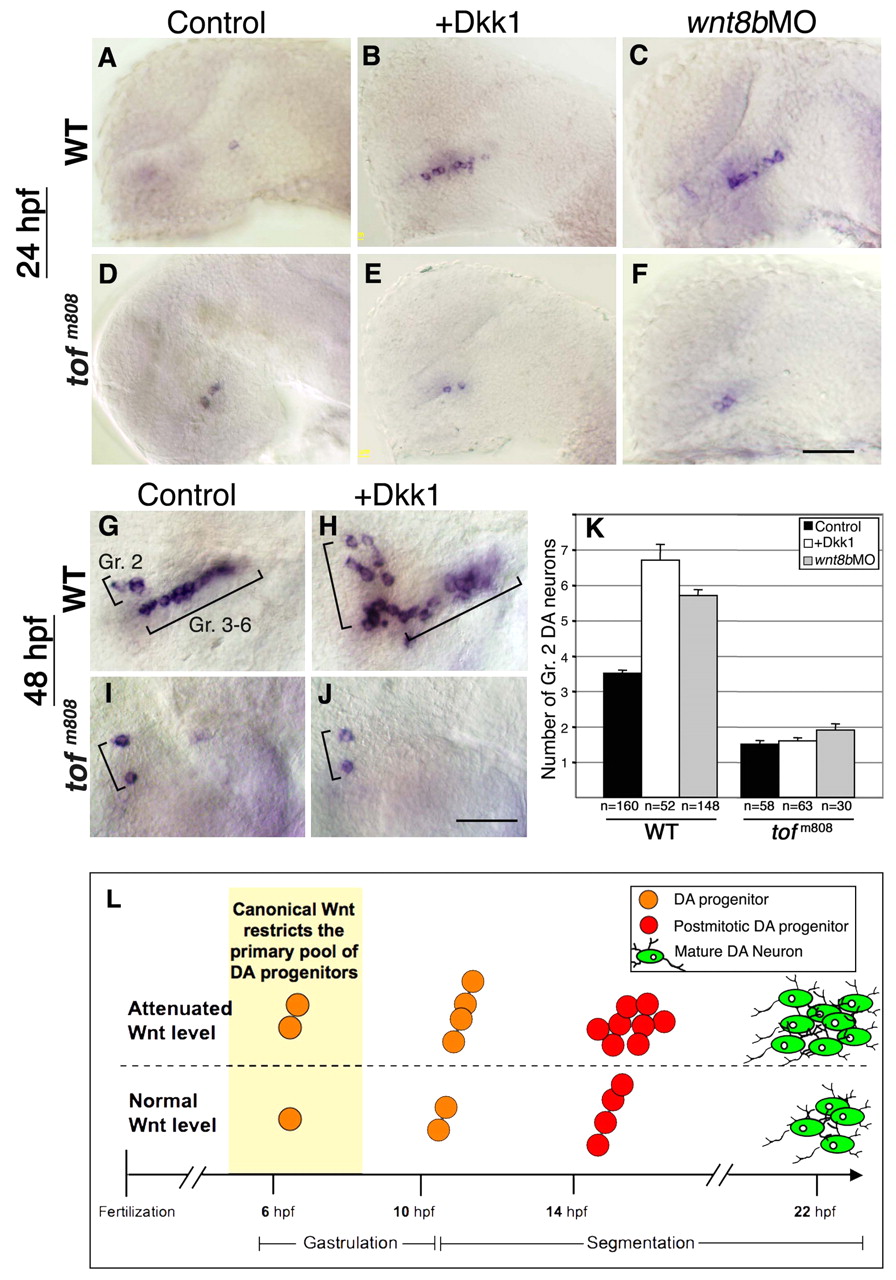Fig. 9 fezl acts downstream of Wnt in controlling DA cell number. (A-F) Lateral views of wild-type zebrafish embryos (WT; A-C) and too few mutant embryos (tofm808; D-F), which harbor a hypomorphic allele of the fezl gene (anterior to the left). Embryos were injected with vehicle solution (control; A,D), dkk1 mRNA (B,E) or antisense wnt8b MO (wnt8bMO; C,F). Embryos were fixed at 24 hpf and subjected to in situ hybridization with a dat probe. (G-J) Lateral views of wild-type (G,H) and tofm808 (I,J) embryos. Embryos were injected with vehicle solution (G,I) or dkk1 mRNA (H,J). Embryos were fixed at 48 hpf and subjected to whole-mount in situ hybridization with a dat probe. The positions of DA group 2 (Gr. 2) and groups 3-6 (Gr. 3-6) are indicated. (K) Bar chart presenting average counts of Dat+ DA group 2 (Gr. 2) cells in WT and tofm808 embryos that were injected with vehicle solution, dkk1 mRNA or wnt8b MO. The number of embryos analyzed (n) is shown beneath. (L) Proposed mechanism for the control of DA cell number by canonical Wnt signaling. Under normal conditions, early canonical Wnt signals restrict the primary pool of progenitors to a single cell that undergoes two cell divisions before differentiating into DA group 2 neurons. Early attenuation of the Wnt signaling pathway relieves this restriction, allowing two progenitors to divide twice and to differentiate into a significantly larger population of DA neurons. Scale bars: 20 μm.
Image
Figure Caption
Figure Data
Acknowledgments
This image is the copyrighted work of the attributed author or publisher, and
ZFIN has permission only to display this image to its users.
Additional permissions should be obtained from the applicable author or publisher of the image.
Full text @ Development

